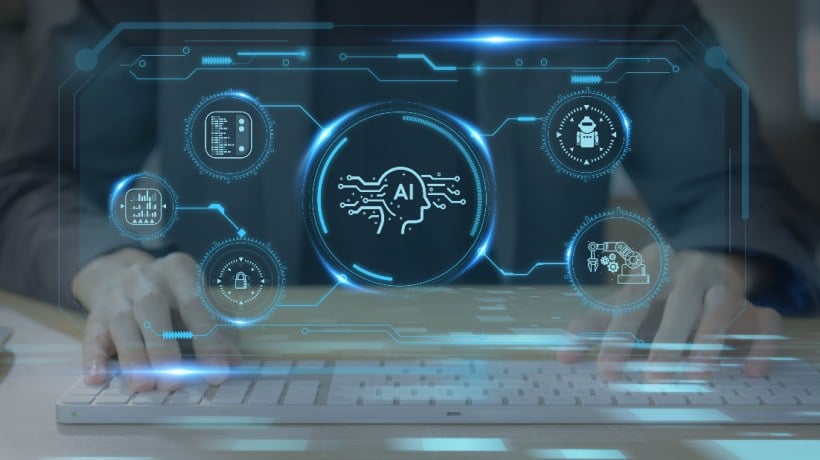As technology advances, the manufacturing industry seeks more effective and efficient ways to create products. In recent years, a key focus has been on automating processes as much as possible with robots and cobots – robotic systems working collaboratively alongside humans in a production process.
Cobots are expected to play an increasingly vital role in propelling the industry forward into its next era of innovation, making it essential to understand their history and capabilities compared to traditional robots. In this article, we will explore how cobots work within the modern manufacturing sector, compare them against traditional robot systems and discuss what this means for altering our understanding of automation today.
Table of Contents
What Is A Cobot, And What Are Its Benefits Over Traditional Robots
A cobot is a robotic device built to work in tandem with humans, providing invaluable assistance to many industries. Specifically, cobots are emerging as the gold standard of robots due to their unparalleled ability to collaborate with humans and complete human-like tasks effectively. Cobots reduce the need for workers to manually do laborious tasks, freeing up valuable resources that can be used in other business operations.
Additionally, cobots are designed to operate safely alongside employees and complete their assigned tasks with minimal disruption. Lastly, companies who outsource labor-intensive operations can benefit significantly from implementing cobots – they minimize costs related to outsourcing and increase operational efficiency thanks to faster and more accurate results than could be accomplished by traditional robots.
In short, introducing a cobot into the workforce has immense potential for enhancing productivity and decreasing costs – making them beneficial on multiple fronts.
How Cobots Are Changing The Face Of Manufacturing
The most apparent benefit of cobots is their ability to eliminate dangerous jobs from the manufacturing process. Cobots are designed with safety in mind, allowing them to integrate easily into production lines without creating risks for human workers. Cobots can also reduce costs associated with employee training, as they do not require specialized guidance and supervision like a robot arm often does.
Furthermore, cobots are programmed to adapt quickly and adjust their approach depending on an ever-changing environment – something traditional robots cannot do. It allows companies to restructure their production lines quicker and more efficiently than before, giving them a competitive edge compared to other businesses that haven’t yet adopted cobot technology.
The Future Of Cobots And Their Impact On The Industry
The cobots are reshaping the manufacturing industry, providing businesses with a robot-human solution that offers advantages over traditional robot arms. This technology can be expected to become even more advanced and efficient – with faster programming and better safety features for increased productivity and security.
The ability of cobots to work alongside humans without causing any disruption or injury also implies that robot-human collaboration could soon become commonplace in production lines across multiple industries. Ultimately, cobot technology has the potential to revolutionize how manufacturers do business – opening up new possibilities for both efficiency and cost savings.
How To Choose The Right Cobot For Your Business?
Choosing the right cobot for your business comes down to finding one that can fulfill your needs and is compatible with any existing robot arms you might have. The first step is assessing what tasks need to be automated, as this will determine the size and type of robot arm needed. Additionally, some robot arms may require specialized programming depending on the complexity of their task – so it’s important to factor this into your decision-making process.
Cobots are transforming manufacturing operations, offering a robot-human solution with immense advantages over traditional robot arms. They provide businesses with an efficient and cost-effective way to automate processes without compromising safety or productivity – making them invaluable in helping the industry stay competitive in today’s rapidly changing market.
Cobot Safety Tips For Optimal Performance
To ensure optimal performance and safety in a cobot-human workplace, there are certain precautions businesses should take.
First and foremost, it is essential to install guards around cobots that restrict access to their moving parts – this prevents incidental contact between the robot arm and human workers. Additionally, training your employees on the proper operation of the cobot is critical for avoiding any incidents or misunderstandings that could lead to injury. Finally, regular maintenance by an experienced technician should be prioritized – as this will extend the life of your cobot while ensuring its operations are running smoothly.
By following these safety tips and implementing the right cobot for your business needs, you can benefit from increased operational efficiency without sacrificing employee well-being.
In Conclusion
Cobots are revolutionizing the manufacturing industry by providing a robot-human solution that offers immense advantages over traditional robot arms. They are more cost-effective, faster to program, and easier to maintain – making them invaluable for helping businesses stay competitive. Additionally, when used with suitable safety protocols, cobots can provide an efficient and secure workplace for both human and robot workers.
















